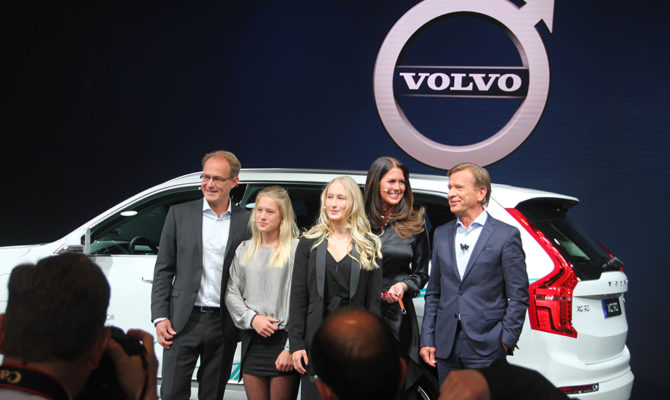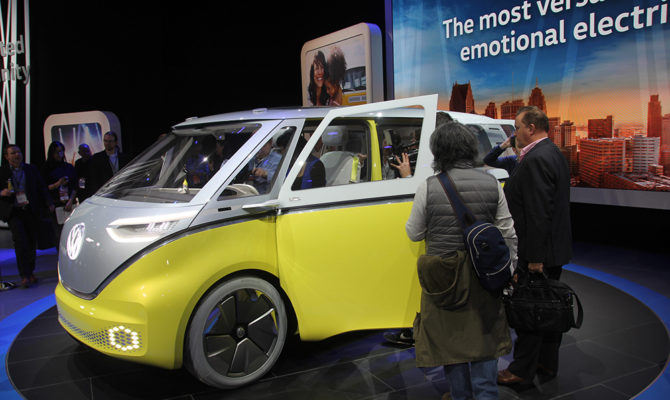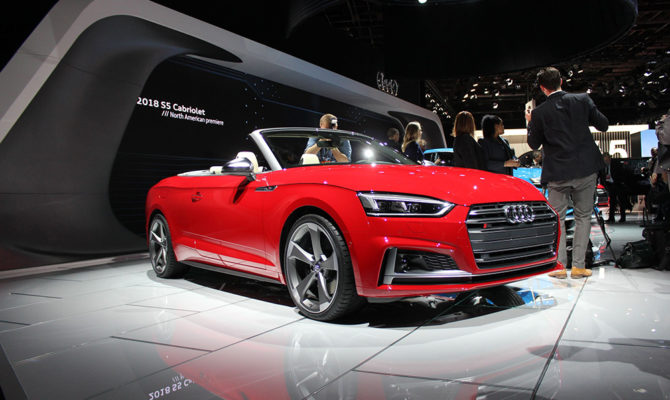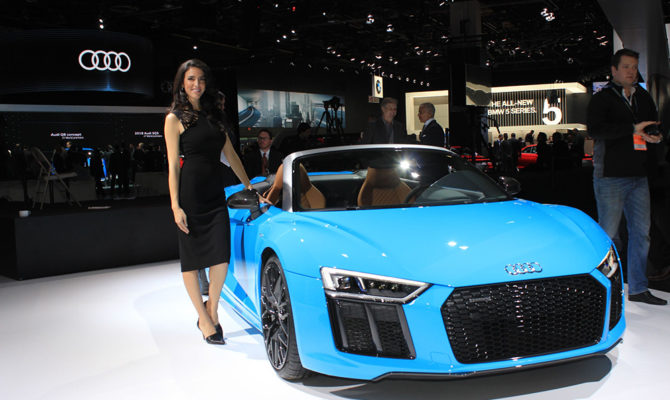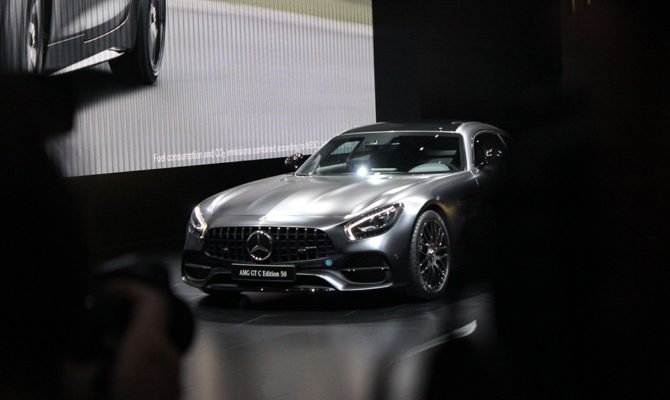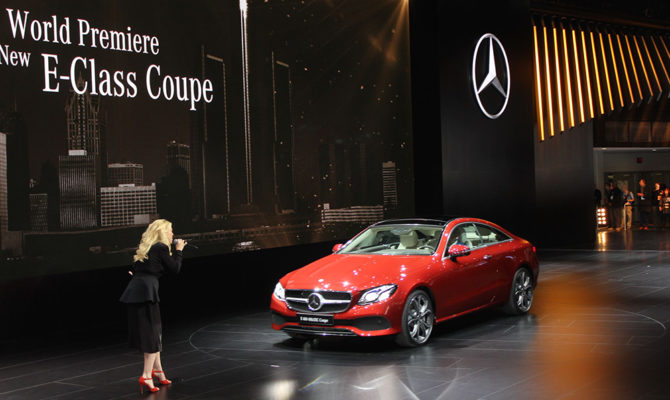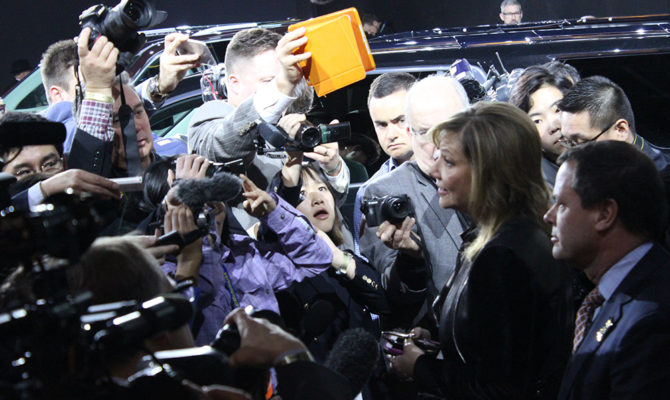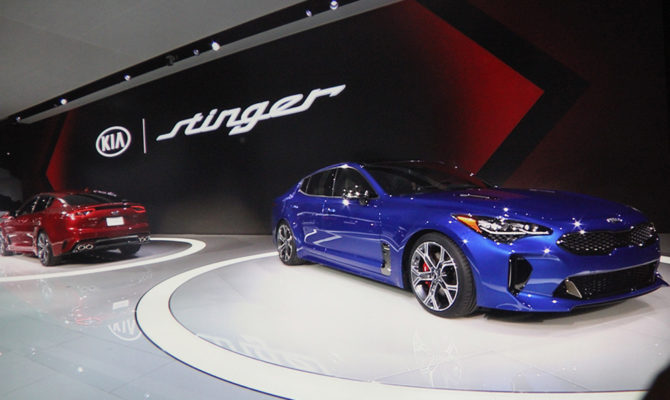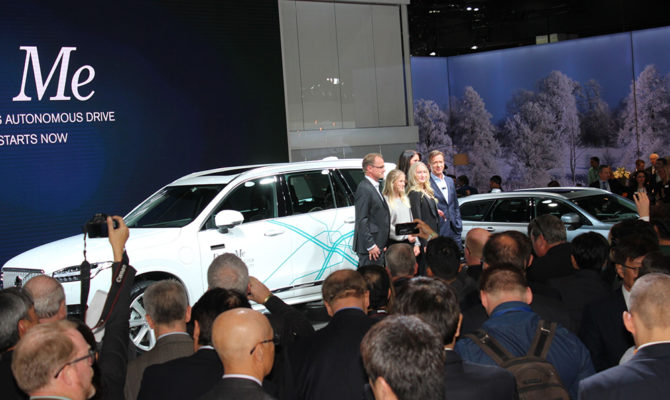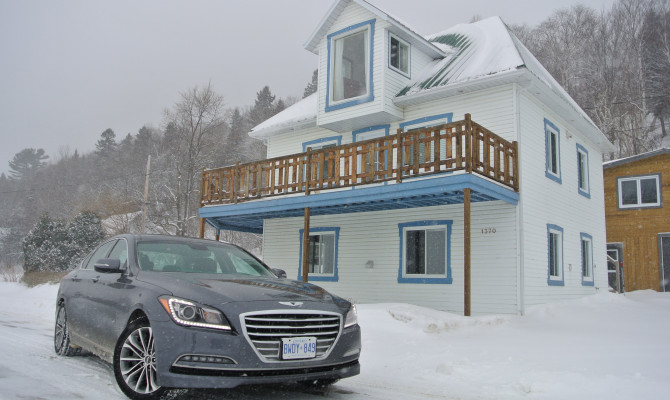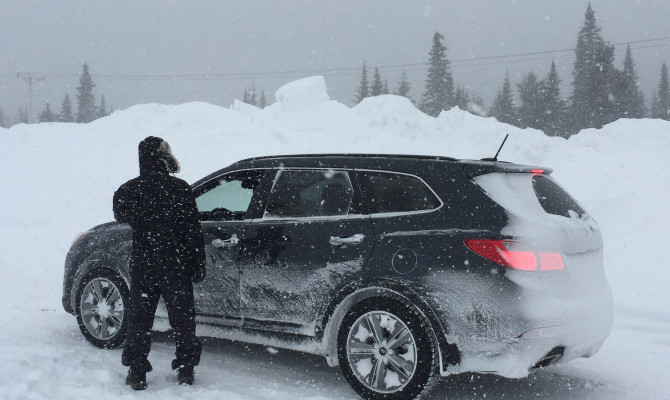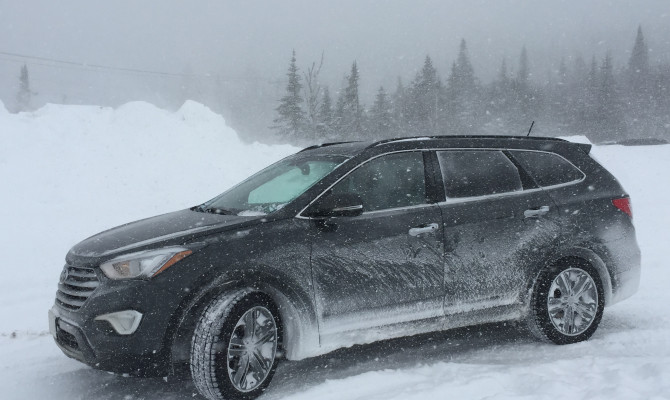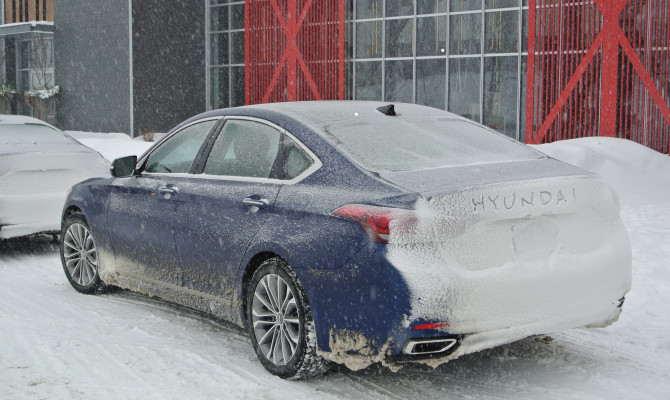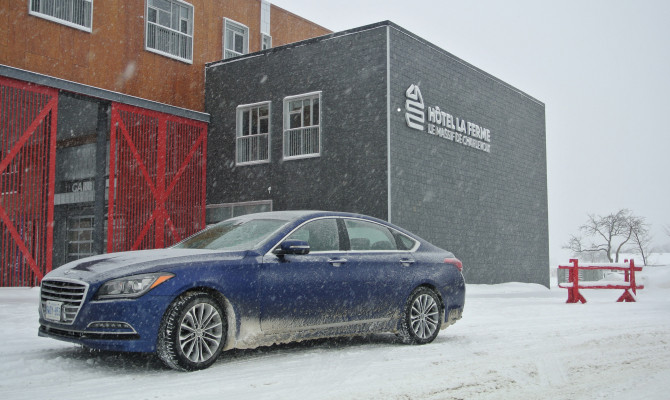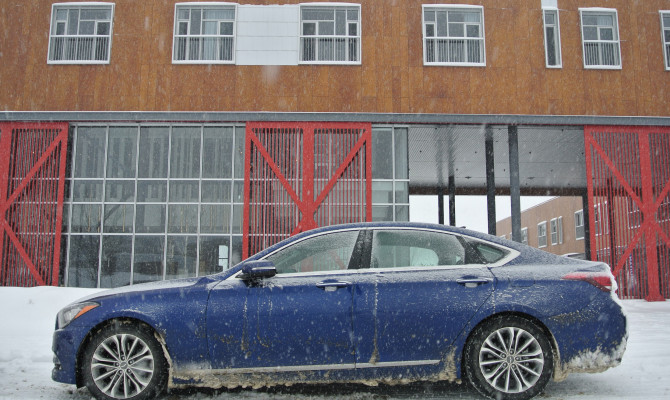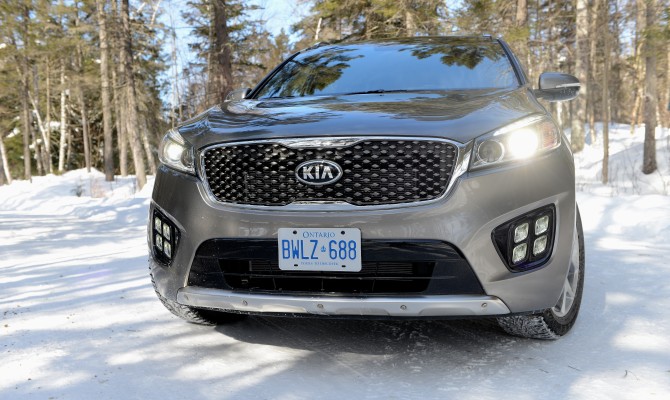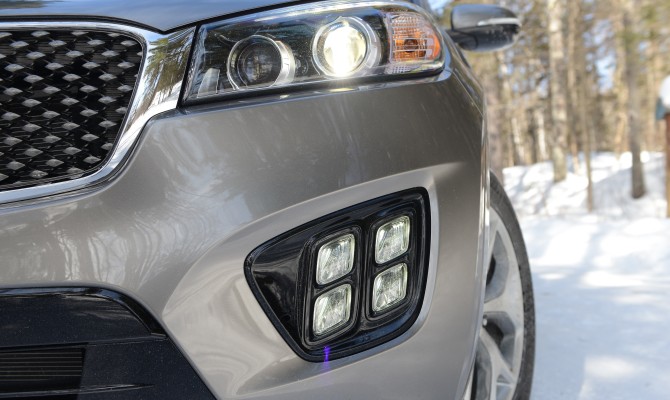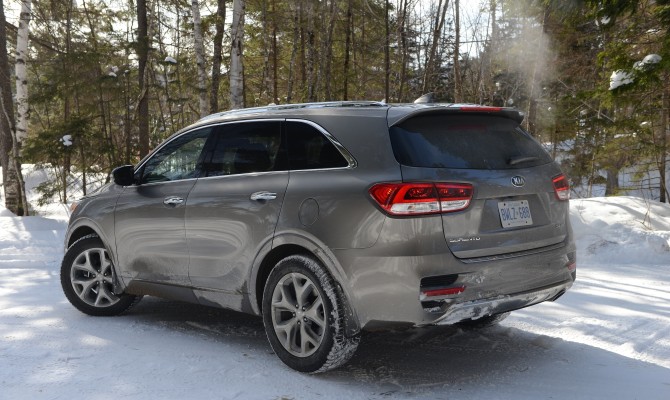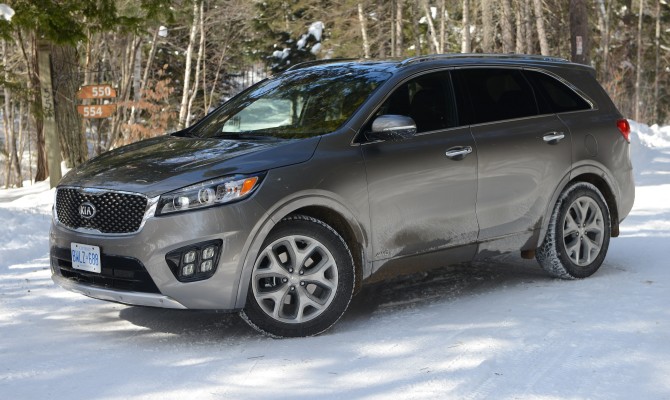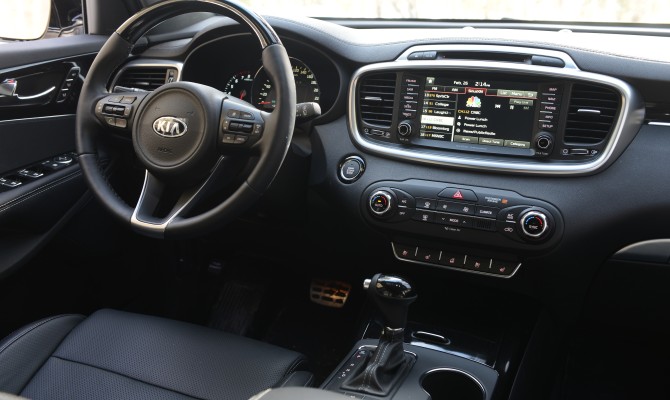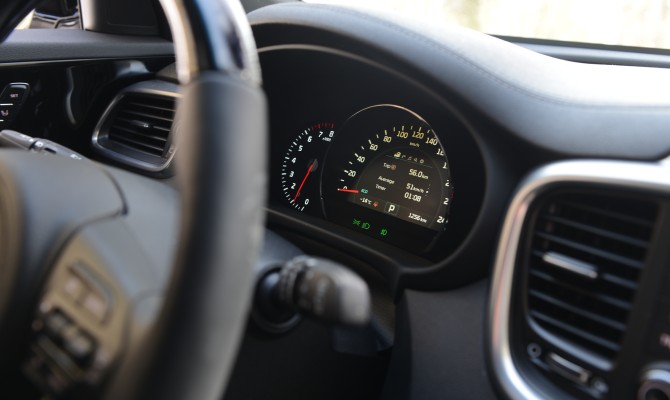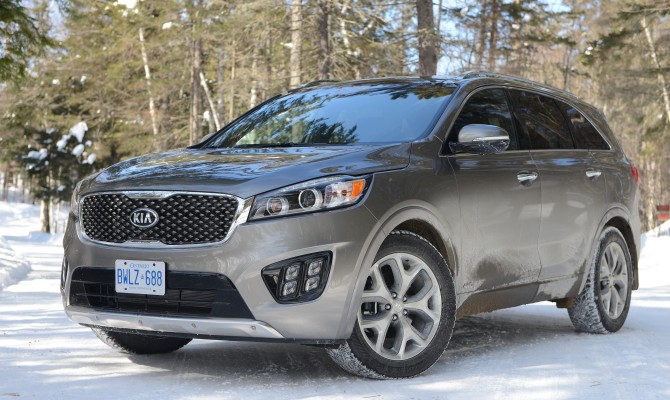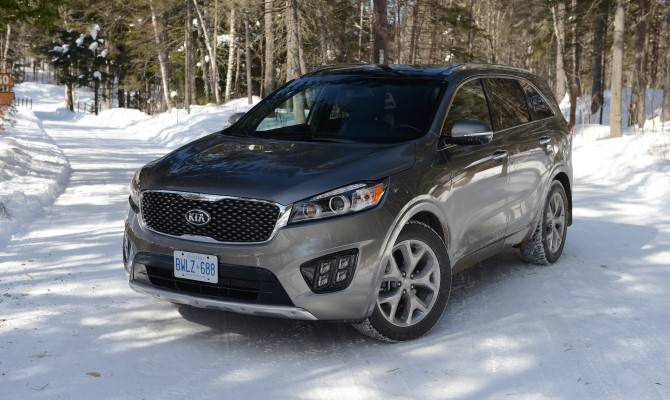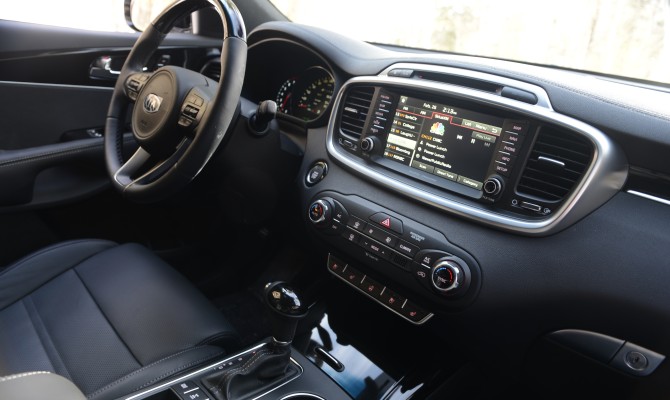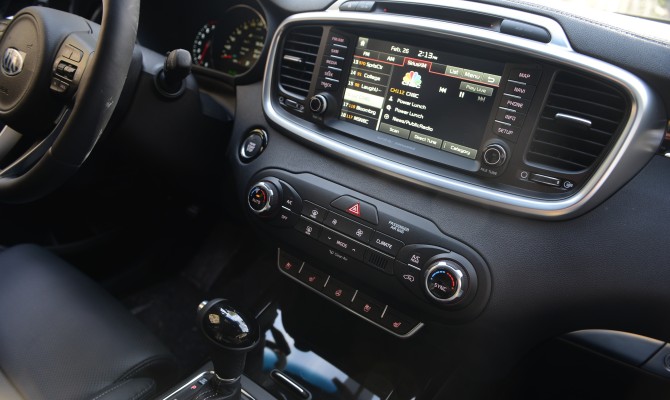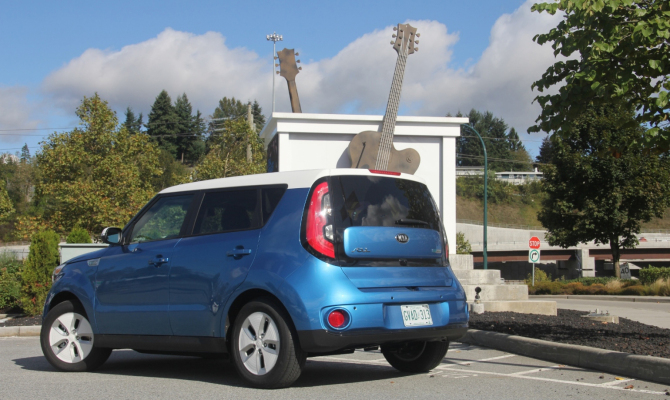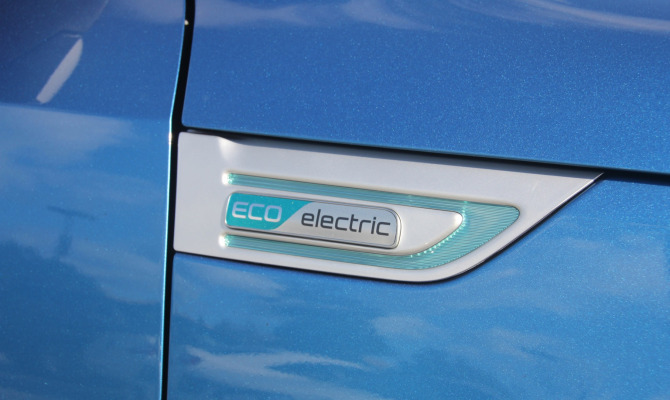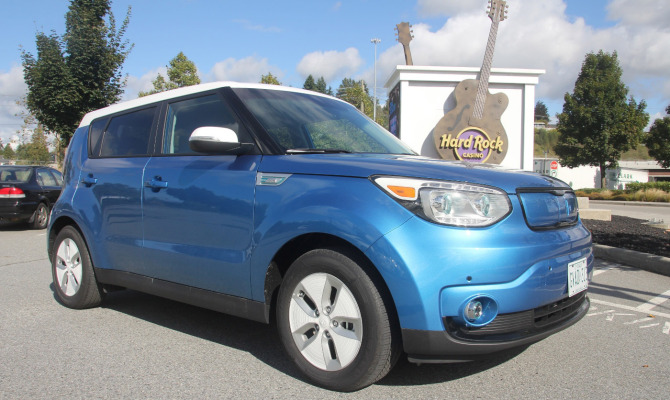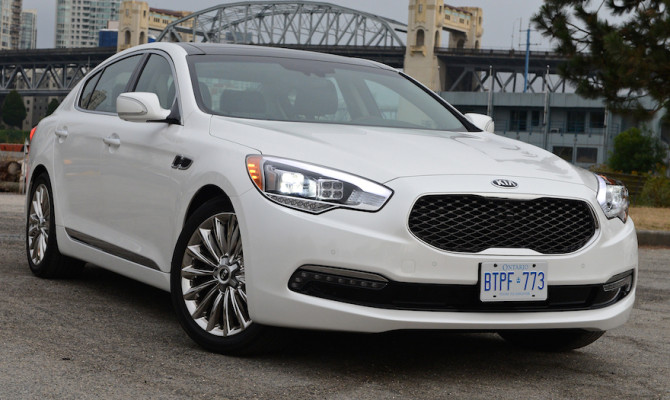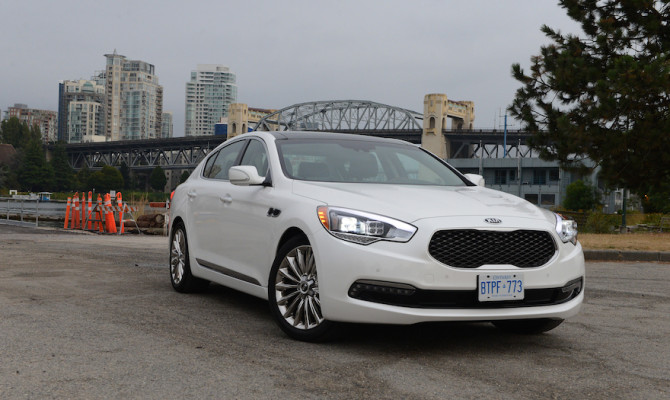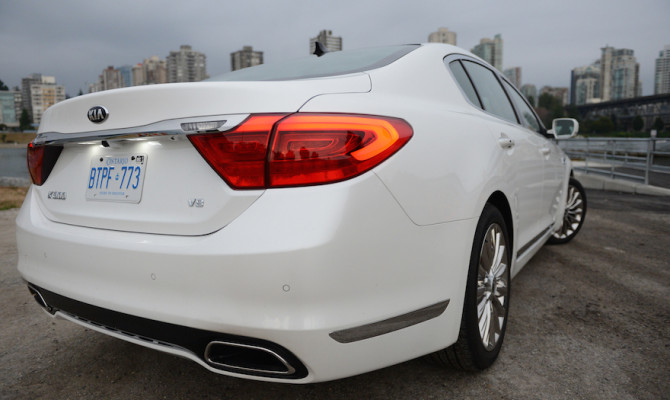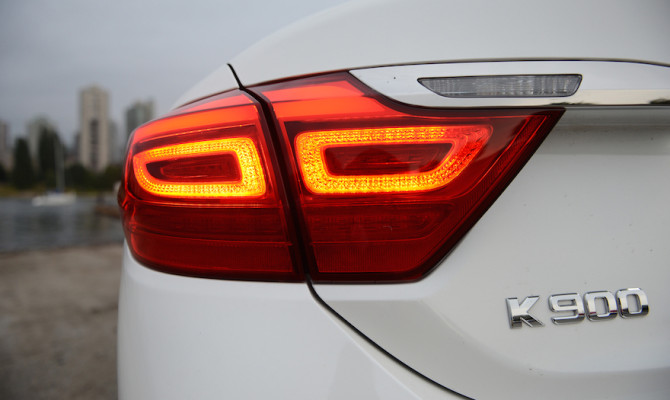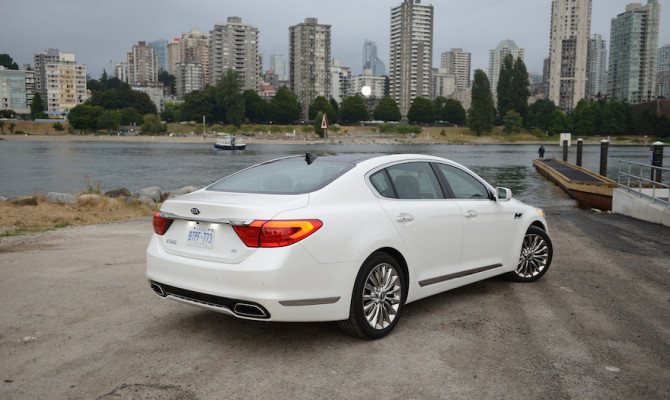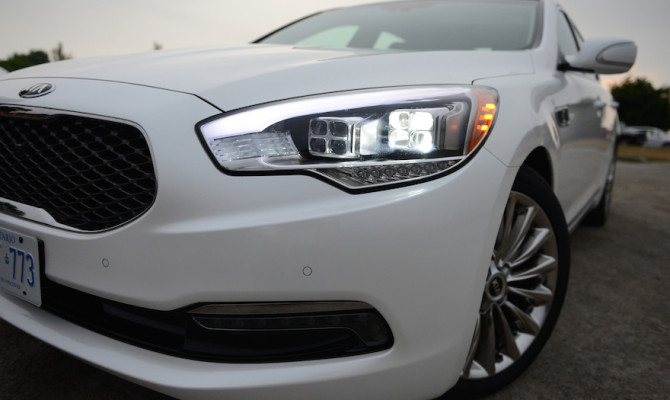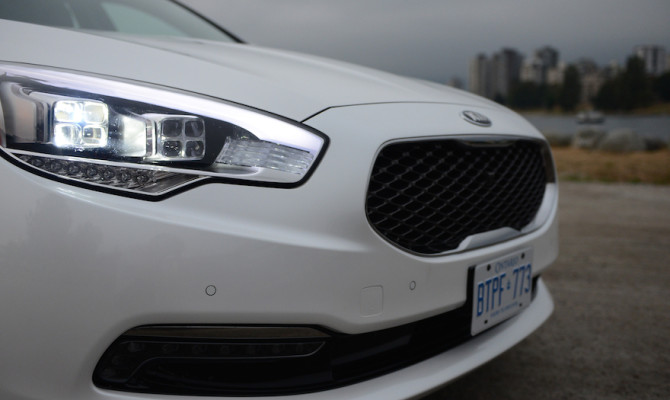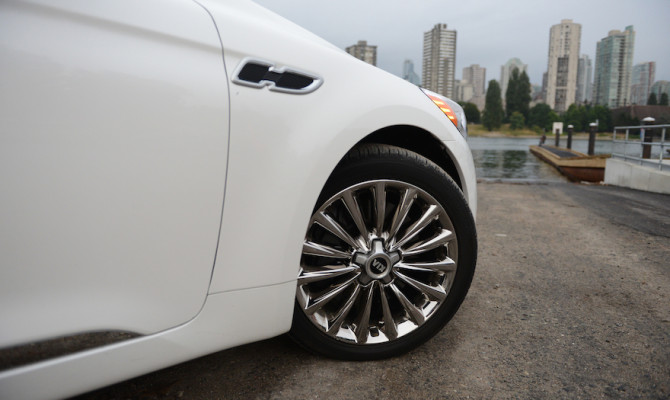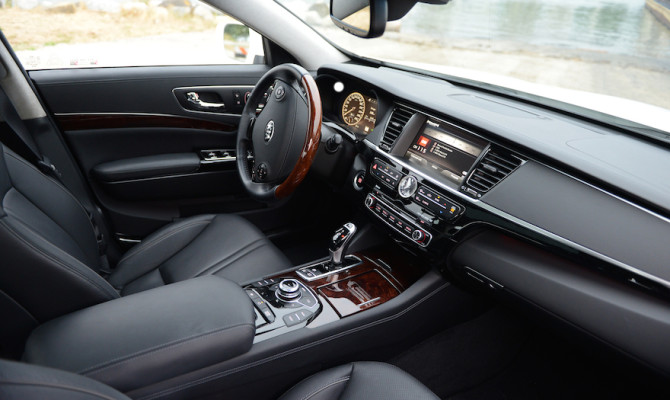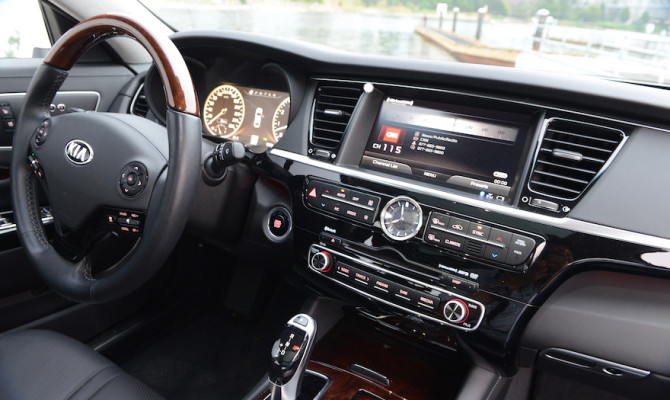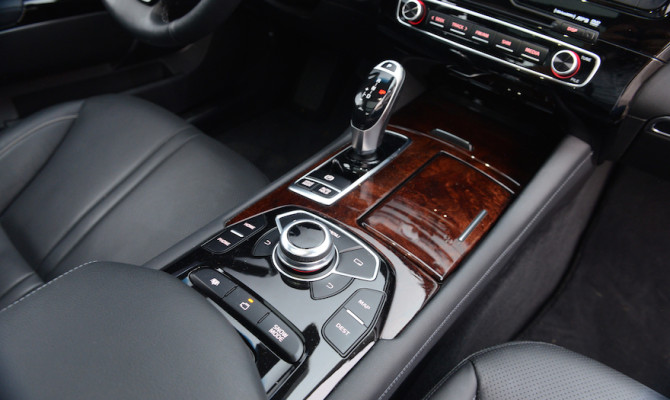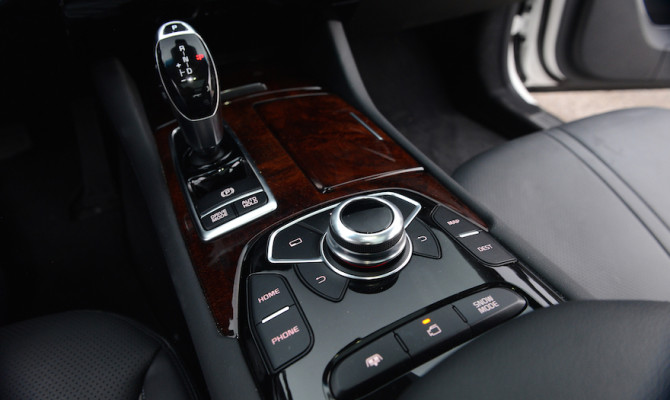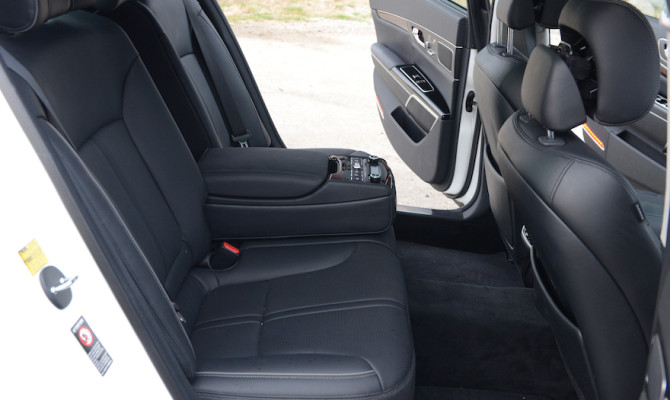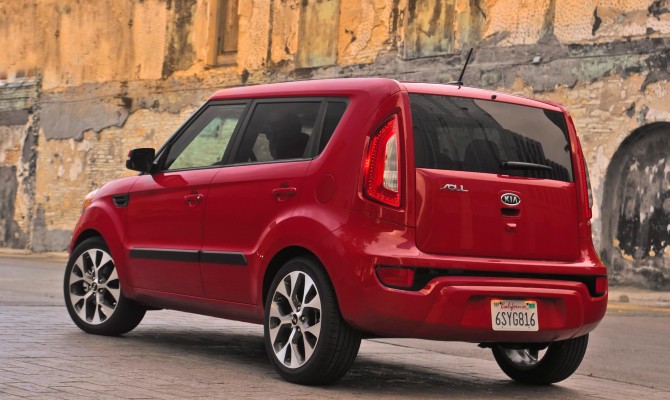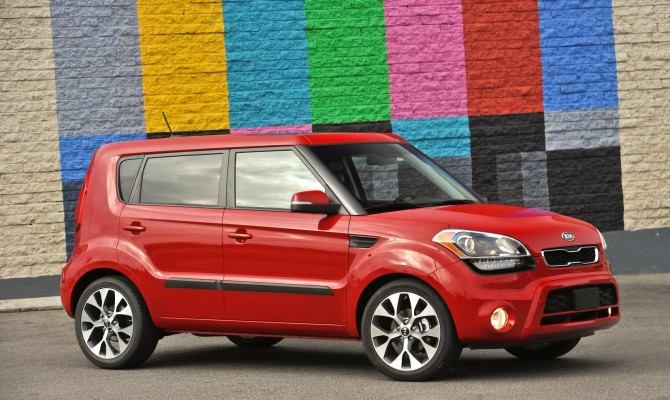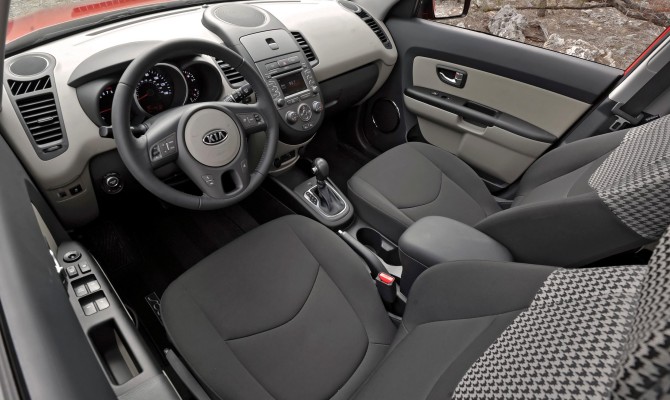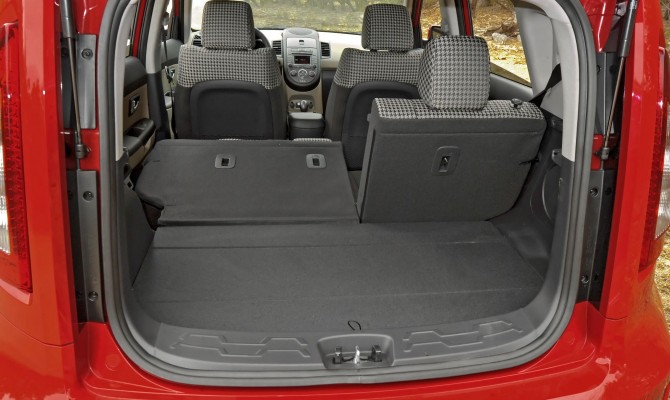“You could be forgiven for thinking that Crossover Utility Vehicles, or cute utes as they are affectionately known, are a 21st century invention but they’re not.”
Detroit, MI – It’s been a while since I last attended the annual North American International Auto Show media preview so the invite to the 2017 edition was a treat.
The crowded media feeding frenzies were just the same as ever but the new vehicle intro events, however, tend to be tamer affairs these days. The emphasis is largely on corporate business not show business, which, of course, is sensible … yet, I do miss that old razzle dazzle!
Not here in person, but the Donald Trump-effect was evident, following the president-elect’s unpleasant utterings about manufacturers who shift production outside of the USA. Almost every auto industry spokesperson talked about American vehicle production numbers, American production content, American employment numbers or planned future growth in America, etc. Oddly enough, Chrysler (aka FCA) did not host an auto show press conference this year, in its home city!
The Ford media presentation was another low-key affair, with top executives mainly talking about future mobility, sustainability and autonomous driving. An updated F150 (all-new 3 years ago) was paraded but the big news for Ford fans is that Ranger, a midsize pickup truck, is back in 2019 and an all-new Bronco will follow in 2020. Both will be produced in a Ford assembly plant in Michigan, USA.
My favourite auto industry speaker was Carlos Ghosn, Chairman and CEO, Nissan Motor Co. Ltd.. During his articulate and insightful keynote address he clarified the difference between an autonomous vehicle and a driverless vehicle. He expects there will be various levels of autonomy offered by auto makers, including Nissan in 2021. A driver will be able to choose when he/she wants it to operate this vehicle in an autonomous mode. The Ghosn definition of a driverless vehicle, on the other hand, is one that has no steering wheel or driver controls. Basically, it’s a robotic transportation appliance on wheels.
Volvo introduced us to the Hains family from Gothenburg. They are the first of 100 families who agreed to take an autonomous Volvo XC90 SUV and be part of Volvo’s long-term Drive Me research program. It will be the world’s largest autonomous driving test on real roads and with real people, according to Volvo. Volvo is also working with Uber on an autonomous ride-hailing program.
Volkswagen really set the room abuzz was the I.D. Buzz. Another microbus concept from VW and this one is autonomous and full-electric.
Bucking the driver-less trend of this year’s show, Kia introduced Stinger, a stylish driver-focused rear-drive (or all-wheel-drive) sports sedan. Its 3.3-litre V6 engine can produce 365 horsepower and get Stinger to 100 km/hour in less than 6 seconds.
The Four Rings rang with the world premiere of the company’s latest utility vehicle addition: the 2018 Audi SQ5.
Boasting new suspension and a powerful update to the power train – a 3.0L V6 that claims to blast the compact crossover from zero to 100 in 5.1 seconds with its 354 horses (and 369 lb.-ft. of torque) – marshalled by an eight-speed automatic transmission.
Audi also showed the Q8 Concept vehicle, billed as the “first full-size SUV in coupe design”, is the basis of what will become, they say, a production vehicle that will be launched for real in 2018 as a powerful (and of course luxurious) hybrid that are already looking forward to here at Driveway.
Mercedes Benz kicked off with a musical quartet that culminated in the German manufacturer’s personable chairman Dieter Zetsche taking the stage. The 2018 GLA compact SUV gets a new face for the new year, and redesigned bumpers. The E-class Coupe made its world debut, adding to an already comprehensive array of recent new models from Benz.
Kia wants to make a statement with this new Sportage – it’s like a rebel in a vanilla category
“Part of winter driving, especially in these blizzard conditions, is largely about the tires.”
Baie-Saint-Paul, Quebec.
Certain car brands are synonymous with defined traits.
Say the word “performance” and you’ll likely get a group of people talking about German engineering. Say the word “safety” and chances are a certain Swedish automaker will be at the top of the list.
What brands come to mind when you think of an all-wheel drive system?
I’m guessing Japanese, also German but how about Korean?
Okay, Hyundai is not the first automaker to come to mind when it comes to their AWD technology. It probably isn’t the second or even third. That said, they’re on a mission to change peoples’ minds.
Hyundai offers two distinct types of AWD systems. One is used with platforms designed for front-wheel drive systems to enhance traction while maintaining fuel efficiency; the second is for rear-wheel drive based platforms and is programmed to increase performance while maintaining control and drivability in slippery road conditions.
I had the chance to test both them out in extreme winter conditions and Baie-Saint-Paul, Quebec, certainly delivered on that promise! – I’m not entirely sure how much snow fell in the time my driving partner and I left the hotel for our morning exercises at Le Massif de Charlevoix ski area, but it seemed like 30 centimetres or more.
No, we didn’t shuttle people up and down the mountain to prove its capabilities. A closed course was set up with more than enough ice underneath to make things very interesting.
We’d put both the Genesis sedan and Santa Fe XL Crossover to the test.
Let the slipping and sliding commence. Part of winter driving, especially in these blizzard conditions, is largely about the tires. No matter how good an AWD system controls the torque split between the front and rear axels, if you don’t have grip, well, then it can get really interesting. Like, Santa Fe XL meet the snow bank. Snow bank meet the Santa Fe XL. Luckily, this wasn’t the case.
Each vehicle had its own play area. The Genesis sedans played more on a skating rink-like surface while the Santa Fes romped in the snow. However, the icier surface was soon heavily covered in snow and visibility became quite grim. The activities were cut short but our drive route wasn’t.
The HTRAC (which stands for Hyundai TRACtion) all-wheel drive system of the Genesis did work at getting us out of some sliding situations. As a bonus for 2015, the Genesis sedans come standard with all-wheel drive. So, if you happen to find yourself stuck in a snowstorm, you need not panic.
HTRAC also has some cool features associated with it. The AWD control logic is different according to driving mode selection for enhanced drivability and efficiency.
For example, with the vehicle set in “Normal” mode, HTRAC defaults to a 40:60 rear-wheel biased torque distribution. The system can shift as much as 90 percent of engine output to the front axle in slippery conditions or 100 percent to the rear at higher speeds for reduced driveline drag and improved fuel economy.
At speed in “Sport” mode, HTRAC gives Genesis a distinctly rear-wheel drive character by sending 80 to 90 percent of power output to the rear wheels.
The latter part of the drive day was in the comfort of the Santa Fe XL (XL meaning it has a longer wheelbase, room for up to seven passengers and comes with a V6 engine.)
The AWD system in Santa Fe models incorporates Active Cornering Control (ACC), an element within the Vehicle Stability Management (VSM) system, which helps the vehicle manage acceleration in a corner. To improve traction and cornering performance, braking force is applied to the inside rear wheel when accelerating through a turn.
Regardless of which vehicle we endured the storm, it’s certain that Hyundai has a good thing going on. And even if you never find yourself in the belly of a blizzard, the piece of mind is still with you every time you get behind the wheel of these vehicles.
For more information, visit www.hyundaicanada.com
Contact: alexandra [dot] straub [at] drivewaybc [dot] ca
Kia has only been in the Canadian marketplace for 16 short years, but in that time they have been able to utilize the resources of its parent company Hyundai to help carve out its own distinct brand.
Design is a big part of Kia’s success and this all-new third generation Kia Sorento is a perfect example of this approach. With fifty design awards under its belt, thanks to the direction of chief designer Peter Schreyer, Kia has pushed hard on the accelerator to update designs quickly, the last Sorento was introduced just two years ago.
Not only has the design been evolving but Kia now has the same 2.0L turbo 4-cylinder available on five passenger versions of the Sorento, something Hyundai had exclusively in the Santa Fe until now.
Looks
Since Kia and Hyundai share the vast majority of its platforms and engines, the design and packaging is what makes them unique. This Sorento is sold as a five passenger or seven passenger versions utilizing the same vehicle dimensions. Hyundai has a different approach; it uses two separate models to achieve the same result, a shorter Santa Fe and a larger Santa Fe XL. Since Kia straddle the two, it makes shopping simpler for buyers. In addition, Kia believes the lower priced, $27,495 base 4-cylinder model will be attractive for shopping in the smaller compact SUV space that might like more space. The more expensive turbo and V6 equipped versions will compete in the mid-sized SUV space. The design is more athletic and solid thanks to a wider, longer and lower body that is accented by a new grille, headlamps, optional LED fog lights and new rear lighting treatment. Unfortunately, to get navigation, LED marker lights, Xenon headlamps, LED taillights and the 19-inch wheels, the buyer needs to choose the top SX trim, these are not offered on lower models.
Inside
Kia has a relentless pace to which they change its vehicles. This is no minor update, on the heals of a major update just two years ago, The dash and interior materials have all been updated along with the layout and design. There is a pleasant look and feel to the dash; the top SX trim is the only one with the beautiful 8-inch centre screen, with rich graphics and easy to use interface. The other models get the 4-inch screen or just a radio readout. Both the 4-inch and 8-inch get a backup camera, the base model gets rear sonar sensors. The good news is heated seats are standard on all models. The middle EX trim is where most shoppers will buy, with features like leather seats, 10-way power driver’s seat, heated steering wheel and a 7-inch screen inside the instrument cluster. The top SX gets all the best stuff including the 8-inch navigation screen, heated rear seats, cooled front seats and upgraded Nappa leather. It’s a shame the bigger centre screen cannot be used on more trim levels.
Drive
Since Kia has added a new 2.0L turbo 4-cylinder engine into the mix, the ordering guide is a bit more complex, here is the easiest way to sort it out. The base LX five-seat is the only one sold with the 185hp 2.4L 4-cylinder engine, in both front wheel and all wheel drive. All other five-passenger models get the 240hp turbo and all seven-passenger models get the 290hp V6. The great news for five passenger buyers is that the turbo has more torque than the V6 and runs on regular grade gas. The V6 would be my choice thanks to its silky smooth power and more consistent fuel economy. Anyone who has ever driven a turbo knows that the power is great but if pushed, it will use more fuel. The all wheel drive models (AWD) now have a centre lock to continually lock the power with fifty percent going to the rear wheels. In addition, there is a new drive mode that changes the engine, transmission and steering feel for normal mode to sport or ECO for better fuel economy.
Verdict
Kia does have a unique offering in the market thanks to three engines, and five or seven passenger options and in a practical sized vehicle. The new turbo is powerful and sophisticated engine that will be welcome buy new buyers. Since the seven-passenger model is available on all trim levels Kia believes that roughly thirty five percent of buyers will choose this model, up from the eleven percent that currently buy it now. The constant pursuit of advanced design and creature comforts is welcome, I wish that the 8-inch screen was available on more than just the SX trim and some of the exterior updates were also shared with lower trim levels. If you are in the market for a smaller SUV, this bigger Sorento is now an option and mid-sized buyers can choose from a turbo or V6 and five or seven passengers, there is a lot of choice.
Contact: zack [dot] spencer [at] drivewaybc [dot] ca
The Lowdown
Power: 185hp 2.4L, 240hp 2.0L turbo or 290hp 3.3L V6
Fill-up: 12.3L/9.3L/100km (city/highway)
Sticker price: $27,495-$46,695
VIDEO: 2016 Kia Sorento Review by Motormouth Canada (Zack Spencer on YouTube)
“The Kia Soul EV definitely rocks and is a must-drive for anyone considering an EV…”
Kia joins the growing list of electric vehicle (EV) manufacturers with Soul EV, a clever adaptation of its tall 5-door compact with the funky styling.
Although still a small slice of the overall car market, EV sales are growing rapidly and so is the public charge station infrastructure that’s crucial to its success, especially in urban areas. (more…)
The Kia K900 has all the refinement and features found in cars with a longer pedigree in the luxury space but this car offers it at a discount…
Differing definitions of luxury in the automotive market are truly reflected in the eyes of the beholder.
To one person it might be having all the refinements and gadgets available in a modern car accompanied with a smooth and quiet ride. To another buyer it might just be about the name on the front of the car, letting all to see it that the owner has “made it” establishing a certain status in society. For many it’s a combination of both.
Enter the new Kia K900 luxury sedan from Kia. It has all the refinement and features found in cars with a longer pedigree in the luxury space but this car offers it at a discount. Then the name on the car comes into play. Is the Kia K900 a car anyone aspires to own? Well, after a weeklong trip with my family I’m more impressed with Kia than I have been before but the realist in me knows Kia isn’t a luxury brand, at least not yet.
Looks
The K900 is an unfortunate name, it begs the question is this a dog? No, it is a full-size car about the same size as a 7-series from BMW or S-Class from Mercedes Benz. The K900 is based on the same platform as the Hyundai Equus but differs in price and content. For a full-sized car with limo-like dimensions, the K900 starts at a remarkable $49,995 for the V6 model and $60,995 for the V6 premium model. The top V8 model is $69,995. The styling is strong, especially the top V8 model seen here with LED headlamps and taillights and very North American looking chrome multi-spoke wheels. The rear doors are huge and Kia has done but good job of keeping the proportions of the car in check while grafting Kia’s signature Tiger Nose grille. The rear bumper and lower air diffuser looks especially chunky, almost mimicking the Lexus LS and its integrated exhaust tips.
Inside
Every person that sat in the K900 was blown away with the refinement, fit and finish and especially the materials used. The V8 test model had leather covering the front of the dash and piano finish on the wood trim accented. Add in tasteful chrome and aluminum, dark, rich wood on the steering wheel and centre console and the K900 looks like a million bucks. The front and rear seats came with ventilation and V8 models have a rear seat reclining feature. Despite spending countless hours behind the wheel travelling with two children in the back, the car offered a very relaxing ride for the passengers, and the kids especially liked the cooled seats on a very hot day. The centre infotainment screen is controlled with a rotary dial in-between the front passengers and is very similar to Audi’s MMI system.
Drive
The V6 model comes with the very competent 3.8L engine that puts out 311hp. having tried this in other Hyundai/Kia products and it is smooth and powerful. The V8 is superb, with 420hp coming from a 5.0L V8, there is no lack of power. The shift in the auto industry is to smaller engines that utilize turbo charging but Kia is sticking with good old engine displacement to get the job done. Covering more than 1,000km, the real world fuel economy was 12L/100km on the highway. To say that the K900 is smooth and quite is an understatement, I would put this car up against the new S-Class from Mercedes and a blindfolded passenger would have a hard time distinguishing the difference. What does become apparent is the K900’s lack of steering feedback to the driver and cornering ability. On Highway 3 from Hope towards Penticton the K900 wallowed in the switchback corners, it really didn’t like it at all. Driving back on the Coquihalla was a different story; the K900 shines in open road cruising, making it a wonderful long road trip companion.
Verdict
The K900 is Kia’s very first pure luxury car and they got a lot right. The interior is as good as anyone in the marketplace and Kia does it at a substantial discount to the competition and power isn’t a problem especially with the big V8 available. But there were a few problems. The automatic lock and unlock feature on the outside doors only unlocked. This is probably a quick fix but an issue and the Bluetooth audio didn’t work either. Another stumbling block is the lack of all wheel drive (AWD). In this segment almost all vehicles sold come with AWD, in fact most companies only offer it. The market for this car is a happy existing Kia owner wanting to upgrade to something more and that is where the V6 model comes into play. Kia might not sell many of these cars but they have it for sale to show anyone that is interested that they can make a true luxury car, maybe not in name but in features and refinement.
Contact: zack [dot] spencer [at] drivewaybc [dot] ca
The Lowdown
Power: 3.8L V6 with 311hp or 5.0L V8 with 420hp
Fill-up: 15.7L/10.3L/100km (city/highway V8)
Sticker price: $$49,995-$69,995
There is comfort in knowing the Soul isn’t just liked by the initial buyer but by the used car buyer too… (more…)
The cleverly designed compact 4-door hatchback wagon is easy on fuel, keenly priced and packed with features…
The Kia Soul is a trendy styling concept that somehow makes a roomy and practical boxy shape look funky.
The cleverly designed compact 4-door hatchback wagon is easy on fuel, keenly priced and packed with features. Soul blew away its main (mini-box) competitors (from Honda, Nissan and Scion), when introduced for the 2010 model year.
Used buyers will also be pleased to learn that, so far, the Soul has proved to very reliable and there’s a reasonably good supply of them available on the market. You do have to be sold on its polarizing (love/hate) looks and appreciate the functional aspects of its design. On the inside, there is lots of room for taller passengers and 60/40 split-folding rear seats even allow you to stuff in a bike, or large golf bags.
**********
“Kia: Taking on the Small Cars from the Big Guys” from Zack Spencer, Driveway Canada (April 3, 2014)
**********
The base engine in a 2010 Kia Soul is a (122-hp) 1.6-litre four-cylinder and it only came as a single trim edition with a five-speed manual transmission. Far more popular is the (142-hp) 2.0-litre four-cylinder engine, which came with a five-speed manual or an optional four-speed automatic transmission and in four trim levels 2u, 4u, 4u Retro, and 4u Burner.
Even a basic Soul comes with heated power mirrors, heated seats, a tilt steering column, power windows and locks, wheel-mounted audio controls, Bluetooth connectivity and rear washer/wiper. Moving up the trim levels can add 16-inch or 18-inch alloy wheels, air conditioning, cruise control, patterned seat inserts, keyless entry, dash-mounted tweeter speakers, door-mounted LED mood speakers and all sorts of unique extras to enhance the funky-car experience.
Standard safety features include six airbags and anti-whiplash active front head restraints. Electronic stability control and 4-wheel anti-lock disc brakes come with 2u or higher trim levels. Soul also got a “Top Safety Pick” classification rating, even though it was rated poor in its new “small overlap” crash test that simulates a front corner collision with a pole or another vehicle.
The base 1.6L model got four-wheel disc anti-lock brakes and electronic stability control for the 2011 model year, making these features standard on all models. The outside door handles were also changed (from flip-up) to a grip type and a Luxury trim line was added. This new top-line trim added body-colour bumpers, a rear-view camera, automatic climate control, Smart Key with pushbutton start, leather upholstery and a centre console armrest.
Changes to Soul for the 2012 model year included interior and exterior styling enhancements, but were primarily mechanical. Even though displacement figures remained the same, the new engines are more powerful and a fuel-saving (hybrid-like) Idle Stop-and-Go feature was an option. New manual and automatic transmissions also came with six-speed gear ratios.
In addition to extra power a 2012 of newer Soul’s fuel consumption is lower. The 2.0 litre engine with an automatic transmission is rated at 7.9 L/100km city and 5.9 L/100km on the highway. While that’s a noteworthy improvement, a similar pre-2012 edition Kia Soul (rated at 8.5 city and 6.6 highway) is also a frugal fuel user.
Soul was essentially a carry-over model for the 2013 model year, other than a revised grille (with new chrome accents) and a re-styled “Kia” badge. This was also the last production year of the first generation Soul.
An all-new Kia Soul was introduced for the 2014 model year.
Though the Soul was designed to attract mainly attract younger buyers, the fuel efficiency and practical characteristics of a Kia Soul can appeal to any age of buyer – if they like its looks.
**********
Price Check: 2010 – 2013 Kia Soul (August 2014)
Year Edition Expect to Pay Today
2010 2.0L 4U $11,000 to $14,000
2011 2.0L 4U $13,000 to $16,000
2012 2.0L 4U $15,000 to $18,000
2013 2.0L 4U $18,000 to $22,000
Prices vary depending on a used vehicle’s condition, mileage, usage and history. A complete mechanical check should always be performed by a reliable auto technician prior to purchase.
**********
Safety Recalls: 2010 to 2013 Kia Soul:
2010:The wiring harness used for the Advanced Lighting Speakers located in the front door trim panels may have been improperly soldered and an electrical short may result in a fire. Dealers will replace the affected harness.
2010/2011: The stop lamp switch may fail and cause intermittent operation of the brake lights. Dealers will replace the switch.
Kia has been growing steadily since it entered Canada fifteen years ago and with new products like the Forte5 and Koup (more…)
Recent Comments
- { Enjoyed your Forest of Bowland in the BMW X5M, particularly the photo of the BMW in front of the main part of Stonyhurst College where... }
- { Bantam designed the Jeep, not Willy's or Ford. The American military gave the original Bantam prototype to Willys and Ford to copy. There is plenty... }
- { All Escalades come with a 6.2-lilter V8 engine that produces 420 horsepower. A six-speed automatic is the only transmission offered and drives the rear wheels.... }
- { Alexandra is an excellent journalist. }
Popular Posts
- Journey to a ‘Sparkling’ Luxury Okanagan Resort “Four lucky readers will put a Dodge Journey’s weekend-...
- The Need For Speed: Hike Those Highway Limits More than half of those polled believe the province sho...
- Drives-U-Crazy… Erratic drivers. An early morning drive from Kelowna to Vancouver is nor...
- Readers Respond: The Pros and Cons of Increasing B.C. Speed Limits Increasing the speed limits will only increase risk to...
- Honda CR-V Review: The Compact Crossover To Get Things Done The CRV is a very stylish and aerodynamic crossover veh...


